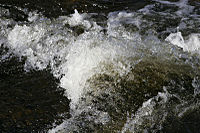Nilai pajanan
Lorem ipsum dolor sit amet, consectetuer adipiscing elit. Maecenas porttitor congue massa. Fusce posuere, magna sed pulvinar ultricies, purus lectus malesuada libero, sit amet commodo magna eros quis urna. Nunc viverra imperdiet enim. Fusce est. Vivamus a tellus. Pellentesque habitant morbi tristique senectus et netus et malesuada fames ac turpis egestas. Proin pharetra nonummy pede. Mauris et orci. Aenean nec lorem. In porttitor. Donec laoreet nonummy augue. Suspendisse dui purus, scelerisque at, vulputate vitae, pretium mattis, nunc. Mauris eget neque at sem venenatis eleifend. Ut nonummy. Fusce aliquet pede non pede. Suspendisse dapibus lorem pellentesque magna. Integer nulla. Donec blandit feugiat ligula. Donec hendrerit, felis et imperdiet euismod, purus ipsum pretium metus, in lacinia nulla nisl eget sapien. Donec ut est in lectus consequat consequat. Etiam eget dui. Aliquam erat volutpat. Sed at lorem in nunc porta tristique. Proin nec augue. Quisque aliquam tempor magna. Pellentesque habitant morbi tristique senectus et netus et malesuada fames ac turpis egestas. Nunc ac magna. Maecenas odio dolor, vulputate vel, auctor ac, accumsan id, felis. Pellentesque cursus sagittis felis. Pellentesque porttitor, velit lacinia egestas auctor, diam eros tempus arcu, nec vulputate augue magna vel risus. Cras non magna vel ante adipiscing rhoncus. Vivamus a mi. Morbi neque. Aliquam erat volutpat. Integer ultrices lobortis eros.
Dalam fotografi, nilai pajanan adalah angka yang mewakili kombinasi kecepatan rana kamera dan f-number, sehingga semua kombinasi yang menghasilkan pajanan yang sama memiliki EV yang sama (untuk pencahayaan pemandangan tetap).
Konsep nilai pajanan dikembangkan oleh produsen rana Jerman Friedrich Deckel pada 1950-an (Gebele 1958; Ray 2000, 318). Tujuannya adalah untuk menyederhanakan pemilihan di antara pengaturan pajanan kamera yang setara dengan mengganti kombinasi kecepatan rana dan bilangan f (misalnya, 1/125 s pada f /16) dengan satu nomor (misalnya, 15). Pada beberapa lensa dengan rana daun, prosesnya disederhanakan lebih lanjut dengan memungkinkan pengendalian rana dan apertur dihubungkan sedemikian rupa sehingga, ketika salah satunya diubah, yang lain secara otomatis disesuaikan untuk mempertahankan nilai pajanan yang sama. konsep ini sangat membantu bagi pemula dengan pemahaman terbatas tentang efek kecepatan rana dan bukaan serta hubungan di antara keduanya. Namun, ini juga berguna bagi fotografer berpengalaman yang mungkin memilih kecepatan rana untuk menghentikan gerakan atau bilangan f untuk kedalaman pandangan, karena memungkinkan penyesuaian lebih cepat—tanpa perlu perhitungan secara mental—dan mengurangi kemungkinan kesalahan saat melakukan pengaturan.
Referensi
- Adams, Ansel. 1981. The Negative. Boston: New York Graphic Society. ISBN 0-8212-1131-5
- ANSI PH2.7-1973. American National Standard Photographic Exposure Guide. New York: American National Standards Institute. Superseded by ANSI PH2.7-1986
- ANSI PH2.7-1986. American National Standard for Photography — Photographic Exposure Guide. New York: American National Standards Institute.
- ASA PH2.5-1960. American Standard Method for Determining Speed of photographic Negative Materials (Monochrome, Continuous Tone). New York: United States of America Standards Institute.
- ASA PH2.15-1964 (R1976). American Standard: Automatic Exposure Controls for Cameras. New York: United States of America Standards Institute.
- "Camera and Imaging Products Association". 2016. Exchangeable image file format for digital still cameras: Exif Version 2.31 (PDF).
- Canon. n.d. "Camera settings: Shooting modes". Canon Professional Network. Retrieved 5 December 2016.
- CIPA. See Camera and Imaging Products Association.
- Davis, Phil. 1999. Beyond the Zone System, 4th ed. Boston: Focal Press. ISBN 0-240-80343-4ISBN 0-240-80343-4
- Desfor, Irving. 1957. "F-Stops On Cameras Discarded; Pick Number From 4 To 18". Arizona Republic, September 1.
- Gebele, Kurt. 1958. Photographic Shutter. US Patent 2,829,574, filed 2 November 1953, and issued 8 April 1958.
- Jones, Loyd A., and H. R. Condit. 1941. "The Brightness Scale of Exterior Scenes and the Computation of Correct Photographic Exposure". Journal of the Optical Society of America 31:11, Nov. 1941, 651–678.
- Jones, Loyd A., and H. R. Condit. 1948. "Sunlight and skylight as determinants of Photographic exposure. I. Luminous density as determined by solar altitude and atmospheric conditions". Journal of the Optical Society of America 38:2, Feb. 1948, 123–178.
- Jones, Loyd A., and H. R. Condit. 1949. "Sunlight and skylight as determinants of Photographic exposure. II. Scene structure, directional index, photographic efficiency of daylight, safety factors, and evaluation of camera exposure". Journal of the Optical Society of America 39:2, Feb. 1949, 94–135.
- Ray, Sidney F. 2000. "Camera Exposure Determination". In The Manual of Photography: Photographic and Digital Imaging, 9th ed. Ed. Ralph E. Jacobson, Sidney F. Ray, Geoffrey G. Atteridge, and Norman R. Axford. Oxford: Focal Press. ISBN 0-240-51574-9ISBN 0-240-51574-9
- Ray, Sidney F. 2002. Applied Photographic Optics. 3rd ed. Oxford: Focal Press. ISBN 0-240-51540-4ISBN 0-240-51540-4
- Ulffers, D. 1968. "Sensitivity Specifications of Exposure Meters". British Journal of Photography 115, 47.
Pranala luar
- Doug Kerr, "Setting Camera Exposure in Terms of Ev" (PDF)
- Fred Parker, table of exposure values for various lighting situations

